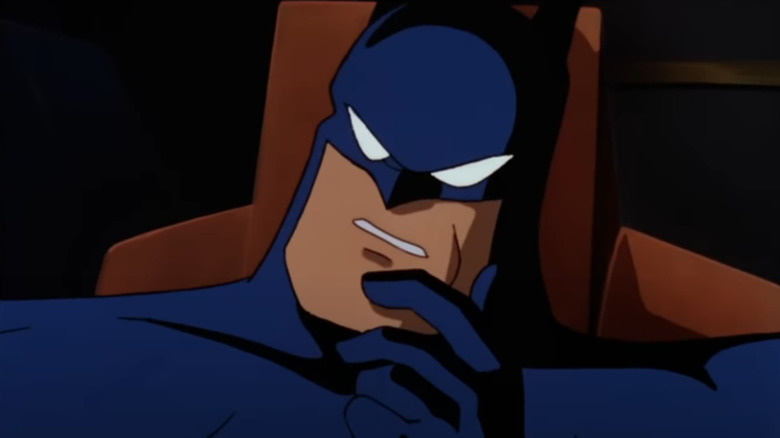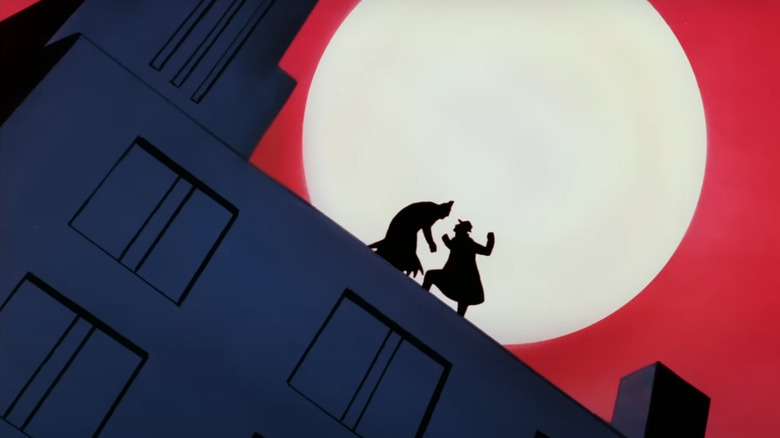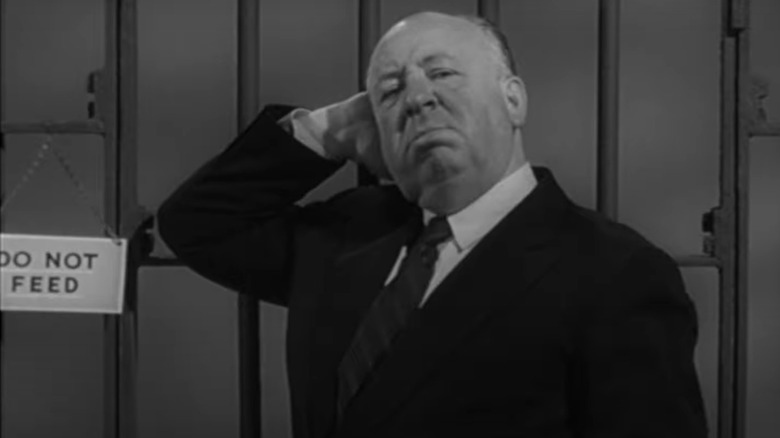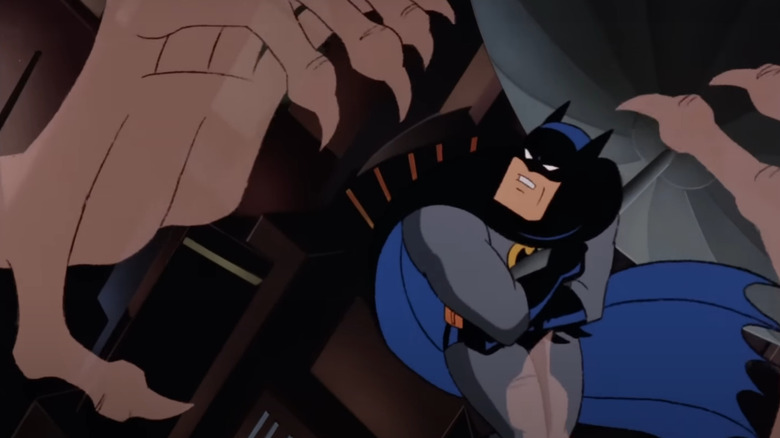How Alfred Hitchcock Greatly Influenced Batman: The Animated Series
In the 1990s, Batman was still undergoing a transformation, with Tim Burton's grim "Batman" and "Batman Returns" having altered the perception of the character from his campier Adam West days. Warner Bros. Animation was gearing up to drop a revolutionary take on the hero that would help cement his legacy as the truly gothic and brooding figure of the shadows he was always meant to be. By now, fans probably know the story of how co-creators Bruce Timm and Eric Radomski borrowed from film noir and Burton's movies to create the moody environs of what would become "Batman: The Animated Series." And the late Kevin Conroy, who we sadly lost this year, is famous for his authoritative Batman/Bruce Wayne voice.
But, as Vulture's oral history of the show revealed, there's more to the story of what made the show a success. After all, a dark and moody series with adult themes that took inspiration from film noir hardly sounded like a sure-fire hit in the age of "Tiny Toon Adventures" — which just happened to be the show Timm and Radomski worked on prior to "Batman: The Animated Series." Nevertheless, the show was a big hit when it debuted on Fox Kids in '92, becoming the top-rated animated series by 1993. So what else went into creating such a sensation? Well, it seems the master of suspense had a small part to play in it.
'A little too Saturday-morning'
Many things set "Batman: The Animated Series" apart from other cartoons at the time, and that was by design. Timm has spoken about wanting to make the show appeal to adults as well as kids, distinguishing it from popular shows at the time such as "Transformers" or "G.I. Joe." While he and Radomski had a clear vision for the series, it would take another "Tiny Toons" veteran to evolve that vision into what "The Animated Series" became.
Writer Paul Dini was that vet. Despite Timm and Radomski's impressively comprehensive plans for Batman, Dini maintains they were still "taking some wrong turns here and there with the development and the vision of the show," resulting in Batman becoming "a little too Saturday-morning." Dini set about infusing the scripts with the now-famous film noir aspects, but he also drew from the master himself, Alfred Hitchcock:
"When I saw where Alan was going with it, I started writing more toward that sensibility, looking at a lot of Hitchcock and film noir, and ways to play it like little mini-movies."
Batman gets the Hitchcock treatment
That "mini-movie" structure came to become a defining feature of the final show. Each episode of "Batman: The Animated Series" began with a title card that evoked the very film noir tone that Dini was shooting for. But beyond that, the Hitchcock influence became very apparent as the show went on — both subtly and directly. As early as the first season episode "Vendetta," Batman can be seen thumbing through files only to flip past a folder marked "N. Bate" — a clear reference to the disturbed main character of Hitchcock's "Psycho."
Later in the first season, the entire episode "Off Balance" took obvious cues from Hitchcock's "Vertigo," with the main antagonist and leader of the "Society of Shadows" even being named after the 1958 Hitchcock thriller. It features a climactic set piece wherein Vertigo himself falls from the tower, à la that very same set piece in the climax of "Vertigo." Even the camera angles used during that moment are highly reminiscent of those used by Hitchcock in his renowned film. There's also an opening sequence that involves a fall from Gotham's Statue of Liberty that echoes a similar moment from the climax of Hitchcock's 1942 spy thriller "Saboteur."
Elsewhere the series borrowed from Hitch in innumerable other ways. Not just in terms of the danger, suspense, and mystery aesthetics on which it so heavily relied, but in terms of the music, which often veered into territory that recalled the great composer and frequent Hitchcock collaborator Bernard Hermann. That's especially obvious in episodes such as the aforementioned "Off Balance" and the 38 and 39th episodes of "The Animated Series," "Heart of Steel" parts one and two.
The perfect combination
The success of "The Animated Series" is, of course, down to numerous factors that all stem from Bruce Timm and Eric Radomski's original concept for the show. Daring to try something different to your usual Saturday morning cartoon fare allowed for all the unique and novel elements to fall into place – from Conroy's "dark, gritty, filthy New York street" Batman voice to the shades of Hitchcock that writer Paul Dini so ingeniously brought to the project. It all comes from the co-creators' attempts to try something different.
Obviously, it's an approach that paid off, with "Batman: The Animated Series" not only redefining the character for a new generation but introducing its own new characters, such as Harley Quinn, that have now become significant parts of the overall Batman mythos. It's a testament to the show's willingness to venture off the beaten path. And who better to help guide the way on that journey than Hitchcock? Aside from symbolizing the kind of aesthetic Dini and the team were looking for, the legendary director was no stranger to innovation himself. Hitchcock represented the same spirit of trying new things by which the team behind "The Animated Series" were motivated. And considering the character of Batman is somewhat of a rogue himself, it's a wonder anyone at Warner Bros. ever thought this marriage of mavericks wouldn't work.



